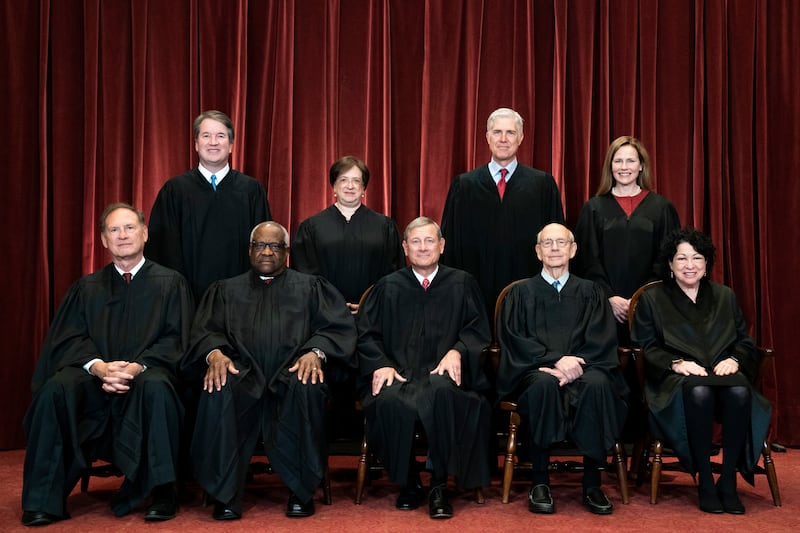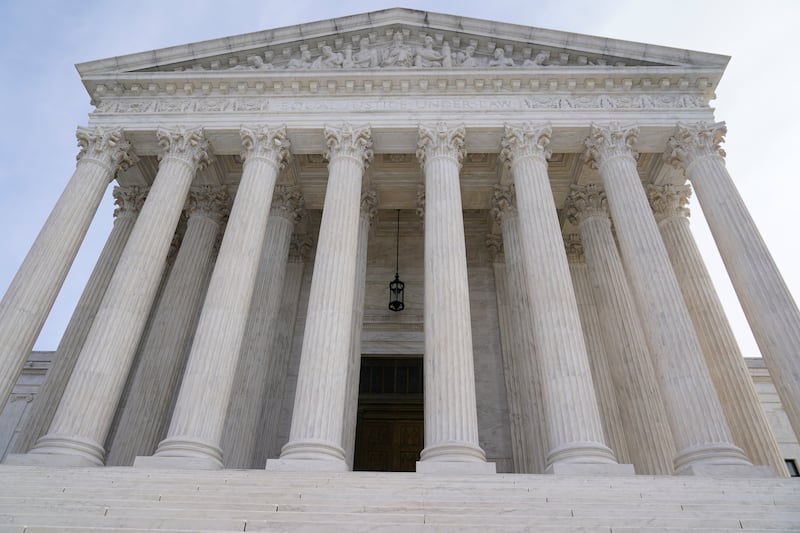In 1973, Roe v. Wade created a constitutional right to abortion. Two decades later, in Planned Parenthood v. Casey, the Supreme Court refused to reverse that controversial decision, writing that “to overrule (Roe) under fire ... would subvert the Court’s legitimacy beyond any serious question.”
Today, Roe was overruled in the Dobbs v. Jackson Women’s Health Organization decision. And in doing so, the majority demonstrated real courage “under fire.” Five justices were willing to take this bold and correct legal step in the face of never-ending personal attacks, efforts to pack the court, fallout from the leaked draft opinion, protests outside their homes and even an assassination attempt.
Dobbs, which is a triumph for originalism and sound constitutional law, also signals that the court is infused with judicial fortitude. This virtue, more than any particular method of deciding cases, guarantees that the court will steadfastly safeguard the rule of law.
Under our Constitution, federal judges have life tenure. Jurists in the “least dangerous branch,” as Alexander Hamilton called them, are afforded these protections to ensure judicial independence. Yet, over time, judges of all stripes have looked to public opinion when making their decisions — or at least they do so quietly.
But in Planned Parenthood v. Casey, three justices explicitly did so. Justices Sandra Day O’Connor, Anthony Kennedy and David Souter agreed that Roe was not correctly decided, but worried that overruling Roe in the face of popular opposition would weaken the Supreme Court’s institutional standing. In their view, overruling the case “under fire” would weaken the court. Justice Harry Blackmun, who concurred in Casey, wrote that the troika exhibited an “act of personal courage.”
Not everyone on the court agreed. Chief Justice William Rehnquist said the majority opinion was “a surrender to those who have brought political pressure in favor” of Roe. He said, “Once the Court starts looking to the currents of public opinion regarding a particular judgment, it enters a truly bottomless pit from which there is simply no extracting itself.”
Rehnquist’s definition of judicial courage would require ruling in spite of public pressure, not avoiding a ruling because of public pressure.
Justice Antonin Scalia sounded a similar tune in his dissent. He was “appalled” that the court’s decision was “strongly influenced ... by the substantial and continuing public opposition (Roe) has generated.” He found it “frightening” that the court would alter its decision “in order to show that we can stand firm against public disapproval.”
Scalia charged the Casey plurality with “almost czarist arrogance” for standing by a decision precisely because the court was “under fire.” To the contrary, Scalia’s definition of standing firm would mean ignoring the political consequences of its rulings.
Today, Dobbs has formally overruled Roe v. Wade.
But just as important, the court has lined up with Rehnquist and Scalia, and jettisoned Casey’s approach to judging cases based on public opinion. Justice Samuel Alito’s majority opinion emphatically rejected any concern for public relations. He wrote that “we cannot allow our decisions to be affected by any extraneous influences such as concern about the public’s reaction to our work.” Alito favorably quoted Rehnquist’s Casey dissent, saying that the court does not derive its legitimacy “from following public opinion” but by faithfully deciding cases based on written law. He explained that the Casey decision “went beyond this court’s role in our constitutional system.”
The justices should be commended for displaying this fortitude in the face of crushing public pressure. During Supreme Court confirmation hearings, senators have excoriated and attacked nominees with one primary goal in mind: to save Roe. Families and friends were dragged through the mud in an effort to cow the would-be justices into submission. We now know that those efforts failed.

Last year, President Joe Biden appointed a committee to “reform” the Supreme Court. Many of the experts in this group favored what was once an unthinkable proposal: expand the number of justices. They certainly knew that such legislation was unlikely to pass, but seemed to think that even the mere proposal might give the justices second thought about overruling Roe. Again, these efforts to intimidate the justices into submission failed.
In May, someone leaked a draft copy of Alito’s majority opinion to the press. One possible explanation for this leak was to create enough public pressure to force a justice in the majority to defect and save Roe. After the leak, there were almost daily protests outside of the homes of Justices Brett Kavanaugh, Amy Coney Barrett and others. And a man traveled across the country with a backpack full of weapons and a plan to assassinate Kavanaugh.
Yet Kavanaugh and all of his colleagues stared right back at these attacks and didn’t even blink. The five members of the majority held strong.
Two years ago, I dubbed the final month of the Supreme Court’s term as “Blue June.” In case after case, the court’s purported conservative majority went to the left. Chief Justice John Roberts, the swing vote, found creative ways to strike balances that did not really resolve contentious issues, but avoided any obvious conservative victory. He hewed closely to a jurisprudence of public relations.
Two years later, we are in a very different time — call it “Red June.” Today, the court overruled Roe v. Wade; yesterday the court held that New York’s restrictions on concealed carry were unconstitutional. These two decisions, separated by 24 hours, were handed down in the face of immense pressure from every facet of our society. Yet the justices did not falter. They are infused with judicial courage. And if they stick to their guns, come what may, the rule of law will be steadfastly safeguarded.
Josh Blackman is a constitutional law professor at the South Texas College of Law Houston. He is the co-author of “An Introduction to Constitutional Law: 100 Supreme Court Cases Everyone Should Know.”

